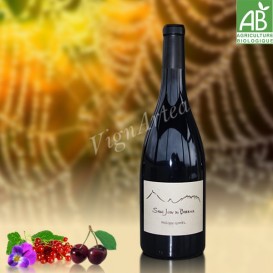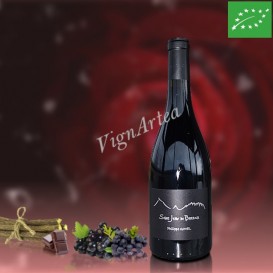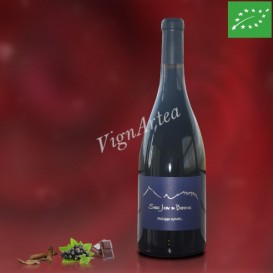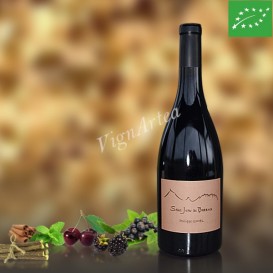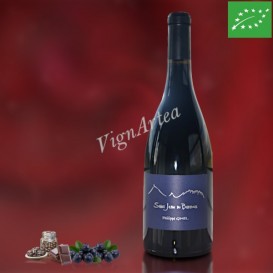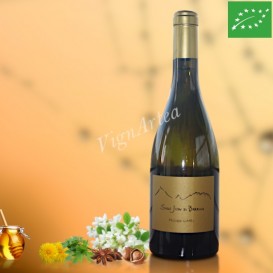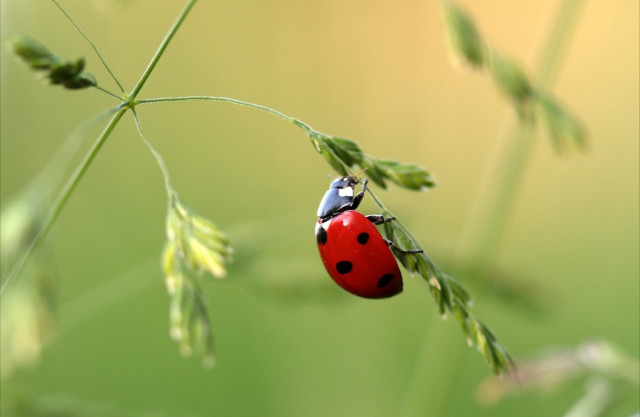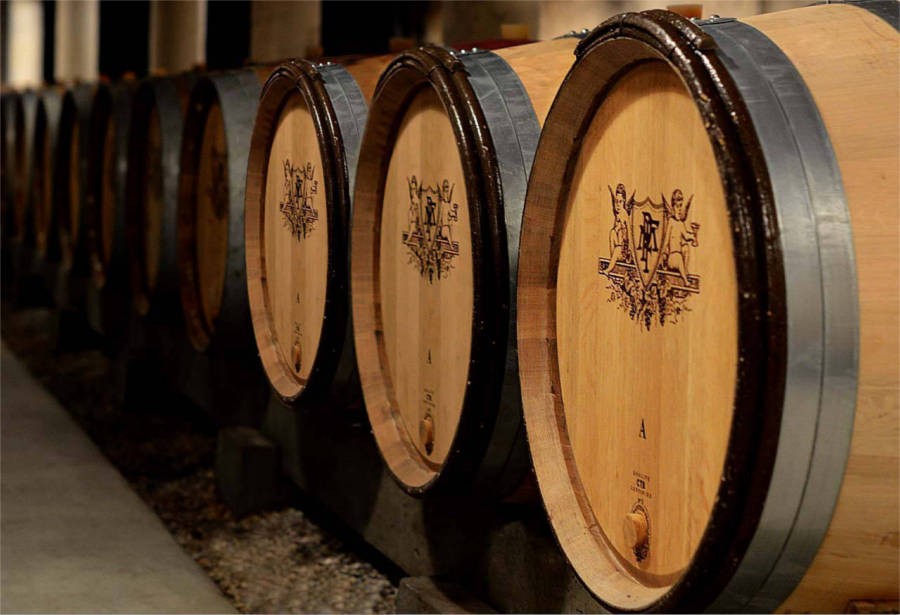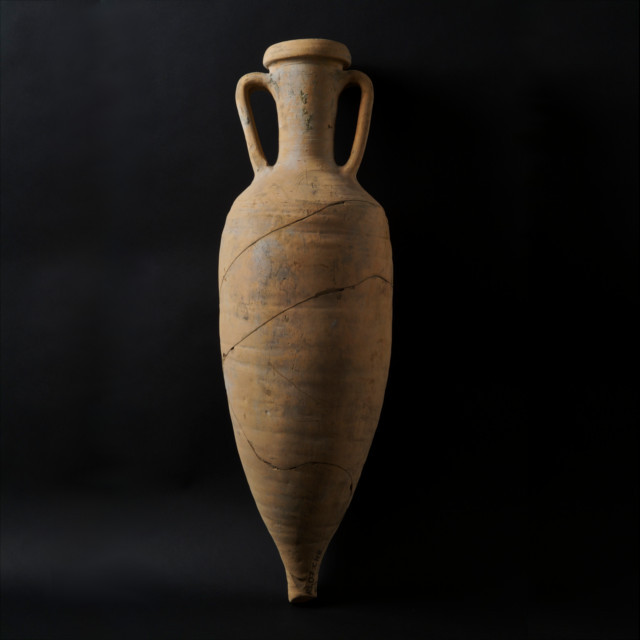Domaine SAINT-JEAN du BARROUX

VENTOUX 12 ha ORGANIC FARMING WINEMAKER : Philippe GIMEL
ESTATE HISTORY
It is in 2003 that Philippe GIMEL settled down in the Vaucluse, in the Saint-Jean du Barroux vineyard of 12 ha he just bought. The grapes grown there were only intended for resale to local cooperatives: there were no infrastructure to produce wine, everything had to be built. A tremendoux job that would have scared off one or more winemaker , but Philippe braved these material considerations : he was aware that the vineyard, hanging on the Mont Ventoux gentle slopes , is on exceptional and so varied soils that one can find up to six different geological layers of rocks.
As a real jewel of exceptional biodiversity, Saint-Jean du Barroux offers a landscape of vines mixed with a rich flora of aromatic herbs and fruit trees, protected by many hedges and other shrubs. The really low productivity of the vines protects them from mildew and powdery mildew which attacks are rarer than elsewhere. Champion of "clean" and healthy wines, Philippe Gimel converted from the beginning to organic farming, which he obtained the certification 3 years after. All his attention is focused on the grapes, this raw material that must be perfect and that he can then sublimate without artifice.(for more information, you can read the article we dedicated to him here).
The wines thus produced are the purest reflection of the terroir, where only grapes and stalks, in a clever mix, give the juice a silky texture and a richness unlike any other.
TERROIR
The vines are spread over different plots where the soils variety make it possible to obtain wines bearing their signature.
These soils, made of marine or continental sedimentary rocks, trace the region evolution over 170 million years.
From the earth origin to the Upper Cretaceous end (-65 m.y.a), the region was entirely submerged. The currents and the bathymetric variations associated with the tectonic movements had a direct impact on the different geological layers nature.
During the Middle Jurassic, between -170 and -164 m.y, a thick dark schist marl layer formed in deep seabed. At the Oxfordian, between -161 and -155 m.y, these black marls enrich themselves with limestone and testify to a modification of the waters depth. During the entire Lower Cretaceous period (-145 to -99 m.y), the basin gradually fills with marly-limestone sedimentation. At the very beginning of the Paleocene, -65 m.y.a, the whole region emerged and the sedimentation became continental.
A particular event (the "Suzette diapir") took place in the Eocene (between -55 and -33 m.y) causing the raising of a very deep geological layer dating from the Triassic period (-251 to -199 m.y) and made of salt and gypsum. At the Oligocene, between -33 and -23 m.y, the climate is sub-tropical and the relatively dry seasons favor the deposition offluvial sediments, clays, carbonates and evaporites. At the very beginning of the Miocene, between -23 and -15 m.y, the region undergoes a new marine transgression favoring carbonate deposits, before emerging again and definitively towards the end of the Miocene 5 m.y.a.
WINEGROWING & WINEMAKING
Each wine expresses a terroir sublimated by the Philippe GIMEL winemaker talent. The wine names are not chosen at random, they precisely define the place where they are from : LA SOURCE is a cuvée from a place where there are many water sources irrigating the area, L'ARGILE takes its name from the rocky substance that mainly makes up the region soils and whose water retention capacity makes it a high quality terroir for the vine. Finally, LA PIERRE NOIRE evokes both its soil and its grape : planted on a black rock in extremely poor soil, the vines only produce very small and concentrated berries of dark colored skin.
The grapes are grown according to the principles of organic farming and are certified by Ecocert. They are harvested manually and according to their maturity degree : sorting is done in the vineyard.
To give elegance and richness to his wines, Philippe GIMEL also uses the grapes stems which he adds to the must during fermentation : to do so, the grapes are destemmed, the stalks are set aside and then carefully sorted. Only the most ripe stems are added to the grapes in increasing proportion according to the cuvée : no stem is added for LA SOURCE , 25% of the stems are added for L'ARGILE , and 90% of the stems are added for LA PIERRE NOIRE.
After fermentation, the musts are aged in stainless steel tanks, including a small proportion in oak barrels of several wines, so that the container does not mark the juice. The wines are never fined, but just filtered before bottling.
The cork stopper used is of the Diam® brand, type 10 (for a 10 years ageing) or 20 (for a 20 years ageing): these corks are guaranteed without TCA, thus eliminating any risk of cork taste.
-
LA SOURCE 2019 (Saint-Jean du Barroux)
14,10 € OUT OF STOCK!OUT OF STOCK!RHÔNE - AOP VENTOUX - RED WINE
Grape varieties: Grenache noir - Carignan - Cinsault
Organic wine Destemming 100%
Ageing for 18 months in tanks & old barrels
DIAM®5 Cork stopper- Nose: tasty. Aromas of redcurrant, cherry and a touch of violet.
- Palate: round, silky, light and fresh. Long finish on cherry notes.
Tasting date: June 2021
OUR OPINION: a safe bet!
-
LA PIERRE NOIRE 2017 (Saint-Jean du Barroux)
32,30 € OUT OF STOCK!OUT OF STOCK!RHÔNE - AOP VENTOUX - RED WINE
Grape varieties: Grenache Noir - Syrah
Organic wine Destemming at 10%
Ageing for 3 years in tanks and oak barrels
DIAM®10 Cork stopper- Nose: concentrated and rich. Tasty aromas of blackcurrant and blueberry with a hint of chocolate.
- Palate: dense. Fine tannins. Liquorice finish.
Tasting date: April 2021
OUR OPINION: always a success!
Other available vintage :
-
SYRAH LE BARROUX 2018 (Saint-Jean du Barroux)
35,00 € In stock!RHÔNE - VIN DE FRANCE - RED WINE
Grape variety: Syrah (100%)
Organic wine Destemming at 75%
Ageing in enamelled tanks for 18 months- Nose: peaty notes, cold tobacco, blackcurrant and chocolate.
- Palate: tight structure.
Tasting date: October 2020
OUR OPINION: the very clayey terroir of Barroux tends to close the Syrah wines. The nose is reduced on opening, and it is essential to decant it for a few hours so that it can breathe. It will benefit from 5 to 8 years of cellar ageing.
-
L'ARGILE 2017 (Saint-Jean du Barroux)
19,85 € OUT OF STOCK!OUT OF STOCK!RHÔNE - AOP VENTOUX - RED WINE
Grape varieties: Grenache Noir - Syrah - Carignan - Cinsault
Organic wine Destemming 75%
Ageing for 2 years in vats & old oak barrels
DIAM®10 Cork stopper- Nose: intense. Aromas of black cherry, blackberry, cassis and cinnamon, with a hint of menthol.
- Palate: full, dense and structured. Fine and elegant tannins. Long finish slightly liquorice perfumed.
Tasting date: October 2020
OUR OPINION: a more complex vintage than LA SOURCE, with a dense and fruity texture. Very good!
Others available vintages :
-
SYRAH ENTREVON 2017 (Saint-Jean du Barroux)
35,00 € OUT OF STOCK!OUT OF STOCK!RHÔNE - VIN DE FRANCE - Red wine
Organic / Ageing in stainless steel tanks and oak barrels
Powerful nose with a hint of reduction that opens up with aromas of blueberries, coffee, dark chocolate and a hint of black pepper. On the palate, the juice is structured and fruity.
(Tasting date : Feb. 2020)
-
LA MONTAGNE 2014 (Saint-Jean du Barroux)
35,00 € In stock!RHÔNE - AOP VENTOUX - DRY WHITE WINE
Grape varieties: Grenache blanc - Clairette - Bourboulenc
Organic wine Ageing in tanks
- Nose: elegant and bright. Delicate scents of white flowers, dandelion flowers, royal jelly, anise and lovage, with a hint of honey and toasted hazelnut
- Palate: a fluid juice, almost airy, and nicely aniseed with a finish that evokes the genepi.
Tasting date: February 2020
OUR OPINION: a fine and subtle white wine of great delicacy.

